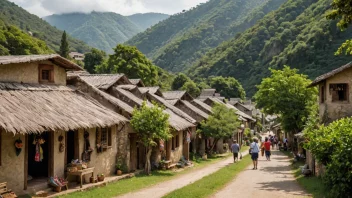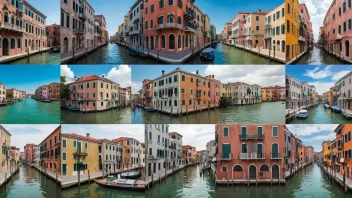The Château de Chambord stands as one of the most magnificent symbols of the French Renaissance, capturing the imagination of visitors from around the world. Nestled in the Loire Valley, this iconic castle is not just a stunning piece of architecture; it embodies the rich history and cultural evolution of France during the 16th century. With its distinct blend of medieval and Renaissance styles, Chambord offers a glimpse into the lavish lifestyle of the French nobility and the innovative spirit of its time. This article delves into the history, architectural significance, and cultural importance of the Château de Chambord, providing insights for travelers looking to explore this extraordinary landmark.
Historical Background
The construction of the Château de Chambord began in 1519 under the commission of King Francis I, who envisioned it as a hunting lodge in the vast forests of Chambord. The project was ambitious, reflecting the king's desire to showcase his power and prestige. It was completed in 1547, although subsequent modifications continued for years. The château represents a turning point in French architecture, moving from the Middle Ages to the Renaissance, and incorporates elements from classic Italian motifs which were then being integrated into French culture.
The Influence of Leonardo da Vinci
One cannot discuss the design of Chambord without mentioning the influence of Leonardo da Vinci. Although Da Vinci died in 1519, his innovative ideas are believed to have inspired the architectural plans for the château, particularly its distinctive double-helix staircase. This spiral staircase serves as both a functional and artistic centerpiece, allowing two people to ascend and descend without ever crossing paths.
Architectural Features
The Château de Chambord is celebrated for its grand scale and unique architectural features. Covering over 13,000 acres, the estate includes not only the château itself but also expansive gardens and a wildlife reserve. The structure boasts 440 rooms, 282 fireplaces, and 84 staircases, all adorned with intricate sculptures and carvings that reflect the artistry of the Renaissance period.
The Distinctive Roofline
One of the most striking features of Chambord is its roofline, characterized by a forest of chimneys, towers, and spires that create a whimsical silhouette against the sky. The roof is not merely decorative; it serves practical purposes, allowing for ventilation and lighting while also showcasing the craftsmanship of the era.
Symbolism in Design
Chambord is also rich in symbolism. The king's emblem, the salamander, is integrated into the architecture, appearing in various forms throughout the château. This symbol represents Francis I's personal motto of resilience and rebirth, connecting the castle to the monarch's identity and aspirations.
The Gardens of Chambord
The gardens surrounding the Château de Chambord are as impressive as the structure itself. Designed in the formal French style, these gardens are meticulously maintained and reflect the grandeur of the Renaissance. Visitors can stroll along carefully manicured pathways, enjoy the vibrant flower beds, and take in the stunning views of the château from various vantage points.
Wildlife Reserve
In addition to the gardens, the estate is home to a vast wildlife reserve. This area is a haven for various species, including deer, wild boars, and numerous bird species. The reserve is an integral part of the Chambord experience, offering visitors a chance to connect with nature while exploring the historical significance of the land.
Visiting the Château de Chambord
For travelers planning a visit to the Château de Chambord, there are several practical considerations to keep in mind. The château is open year-round and offers a variety of tours, including guided options that provide deeper insights into its history and architecture.
Getting There
Chambord is easily accessible by car or public transportation from major cities like Paris and Tours. The journey through the picturesque French countryside enhances the overall experience, setting the stage for the encounter with this architectural marvel.
Visitor Tips
- Timing Your Visit: To avoid crowds, visit during weekdays or in the early morning. Spring and fall are particularly beautiful times to explore the gardens.
- Guided Tours: Consider taking a guided tour to gain a deeper understanding of the château’s history and architectural significance.
- Photography: Don’t forget your camera! The stunning architecture and beautiful gardens provide endless opportunities for photography.
Cultural Events and Activities
The Château de Chambord is not just a static monument; it is a vibrant cultural hub that hosts a variety of events throughout the year. From art exhibitions to music festivals, there are plenty of activities that celebrate both the history and contemporary culture of the region.
Chambord Music Festival
One of the highlights of the cultural calendar is the Chambord Music Festival, which features performances by renowned musicians in the stunning setting of the château. This festival not only enriches the cultural experience but also connects visitors to the vibrant artistic community surrounding Chambord.
Conclusion
The Château de Chambord is more than just an architectural wonder; it is a testament to the rich history and cultural evolution of France. With its stunning design, sprawling gardens, and historical significance, it offers a unique glimpse into the past while remaining a vibrant part of contemporary culture. For travelers seeking a blend of history, art, and nature, a visit to Chambord is an unforgettable experience that should not be missed.






